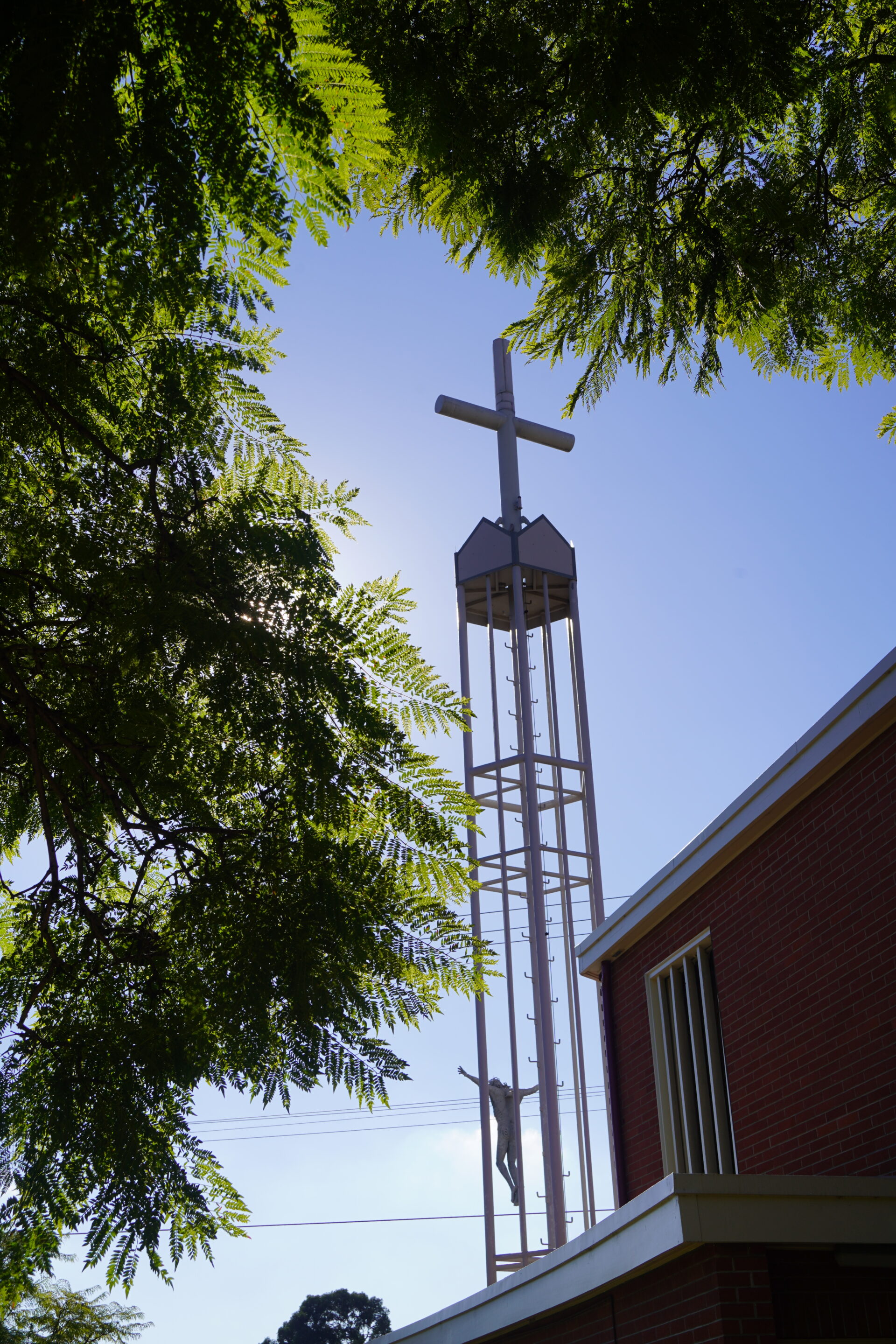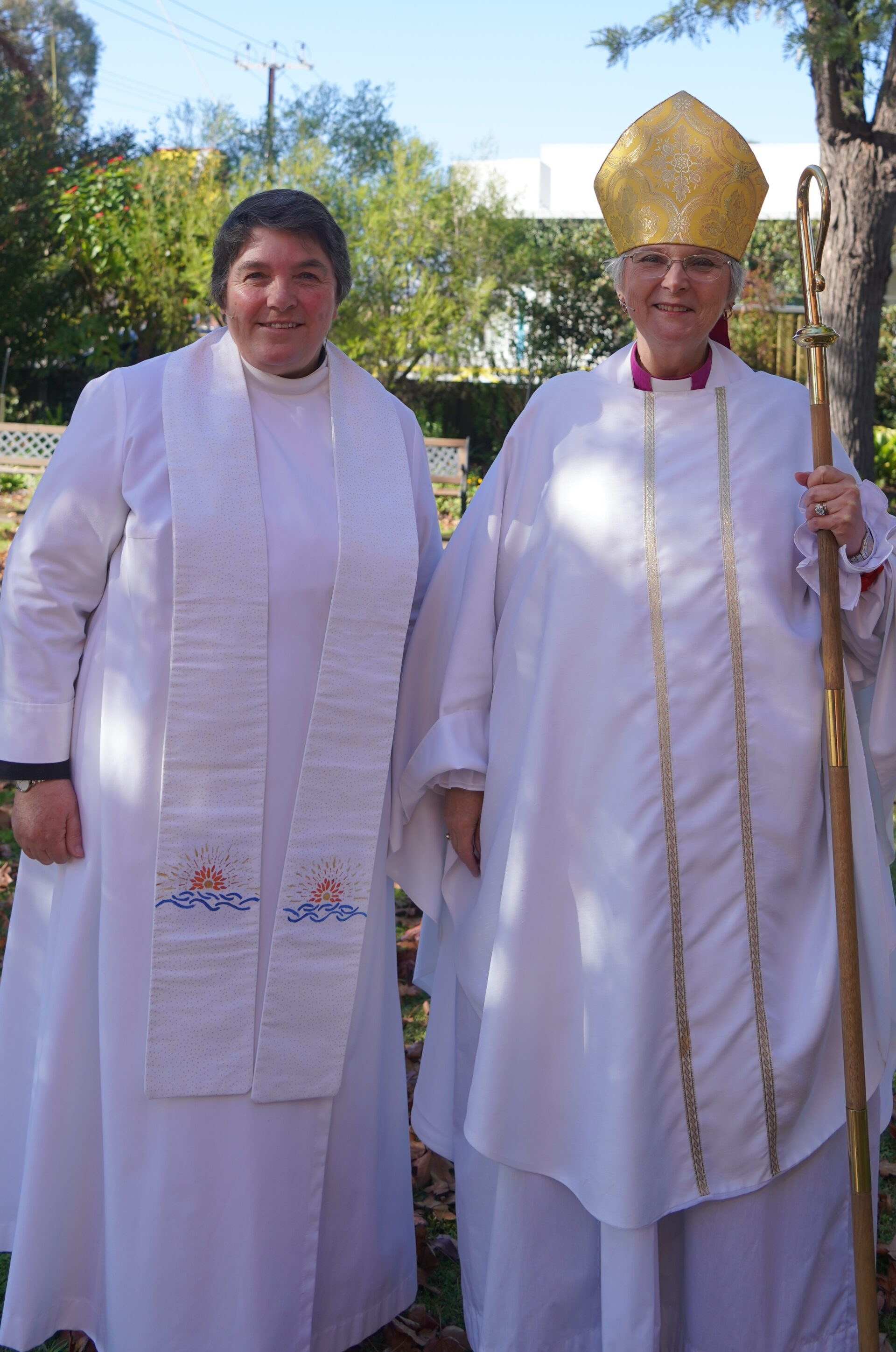The parish of St Richard’s of Chichester, Lockleys, celebrated the 60th anniversary of the building of their church as part of its patronal festival on 16 June.
Bishop Denise Ferguson and parish priest Sally Sandford-Morgan conducted the service to a packed church, with several of the congregation having been pioneers when the church was built in 1964, including the daughter of the original parish priest, the Rev’d Tom Drought.
“A diamond anniversary marks 60 years has the potential to encompass three generations. And 60 years is often the last major milestone where the original generation is still involved with the day-to-Day rhythm of ministry and mission in the church. It offers us a living memory reminder of the journey,” Bishop Denise said in her sermon.

“It’s heartening to read the Reverend Tom Drought’s musings on how this church community was faithfully serving and sowing seeds of love in 1964,” Bishop Denise said. “And I quote ‘through preaching and sacramental ministry, pastoral visitations, religious instruction in schools, Sunday school and adult Christian education, youth ministry, global and global mission work fellowship, and an open door and iation to all’.
“I’m sure many of these offerings still resonate today in the seeds of love and faith, you continue to sow in the second parable, the kingdom of God compared to a mustard seed, although one of the tiniest of seeds that grows into a large shrub in which even birds can build their nests.

“It provides nourishment and nurture for those who seek to shelter. These parables being placed in their original context are words of encouragement to a struggling church living in a small scattered community…I often wonder how those first followers would react today if they could see how far the seeds of God’s truth and love have spread through the ages, touching places that didn’t even exist in their time.”
The service marked Bishop Denise’s last visit to St Richard’s before she retires and moves to be with her family in Brisbane.

The following information was compiled over the years by Charles Ancell during the 1950s and M. E. Fenton for the Lockleys Jubilee, 1976 and the St Richard’s Festival of Arts in November 1988, and appears on the St Richard’s website.
The church architect was Sir Eric von Schramek. Von Schramek is known as a designer of 57 churches in Bavaria, NT, SA, NSW, ACT and Papua New Guinea. There is not another local architect with that large body of liturgical work. Some of them are at the age or position that they are vulnerable to development. In particular, the iconic Maughan Uniting Church in Waymouth Street was recently demolished to make way for accommodation. Most of his churches are Lutheran and Uniting churches. This was his only Anglican Church, but he always strove to learn about a denomination and embody its values in his design.
He is an excellent example of a post-WWII talented migrant who made a new life here. Most would not know both his father and father-in-law perished in concentration camps. He finished his architecture study and his first job was in the town planning of the war-destroyed city of Nuremburg. From there, he and his wife, also a talented interior designer, moved to Darwin. He directed all the early planning of our Australian war-destroyed city. This background of trauma and loss gave him extra sensitivity to every aspect he brought to designing our church.
The architect collaborated with his good friend, Stan Ostoja-Kotkowski to provide distinctive enamelled panels in St Richard’s. Ostoja-Kotkowski, a Polish refugee became an important artist in South Australia in the 1960s and 70s. He was well- known for his theatrical sets; his laser works and his large mural at the old Adelaide Airport (now gone). He is an incredible artistic pioneer, much studied and admired. He worked with von Schramek on the Immanuel Lutheran chapel. IIntegral to this church, he designed and made unique porcelain enamelled panels with stylised figures of the twelve apostles and their methods of martydom on either side of the sanctuary.
This dynamic team of architect and artist, both of them who excelled in their fields (von Schramek was also a noted commercial architect of iconic buildings) made the design of St Richard’s church a space that spoke to their European heritage, their war experiences and their sensitive artistic values.






